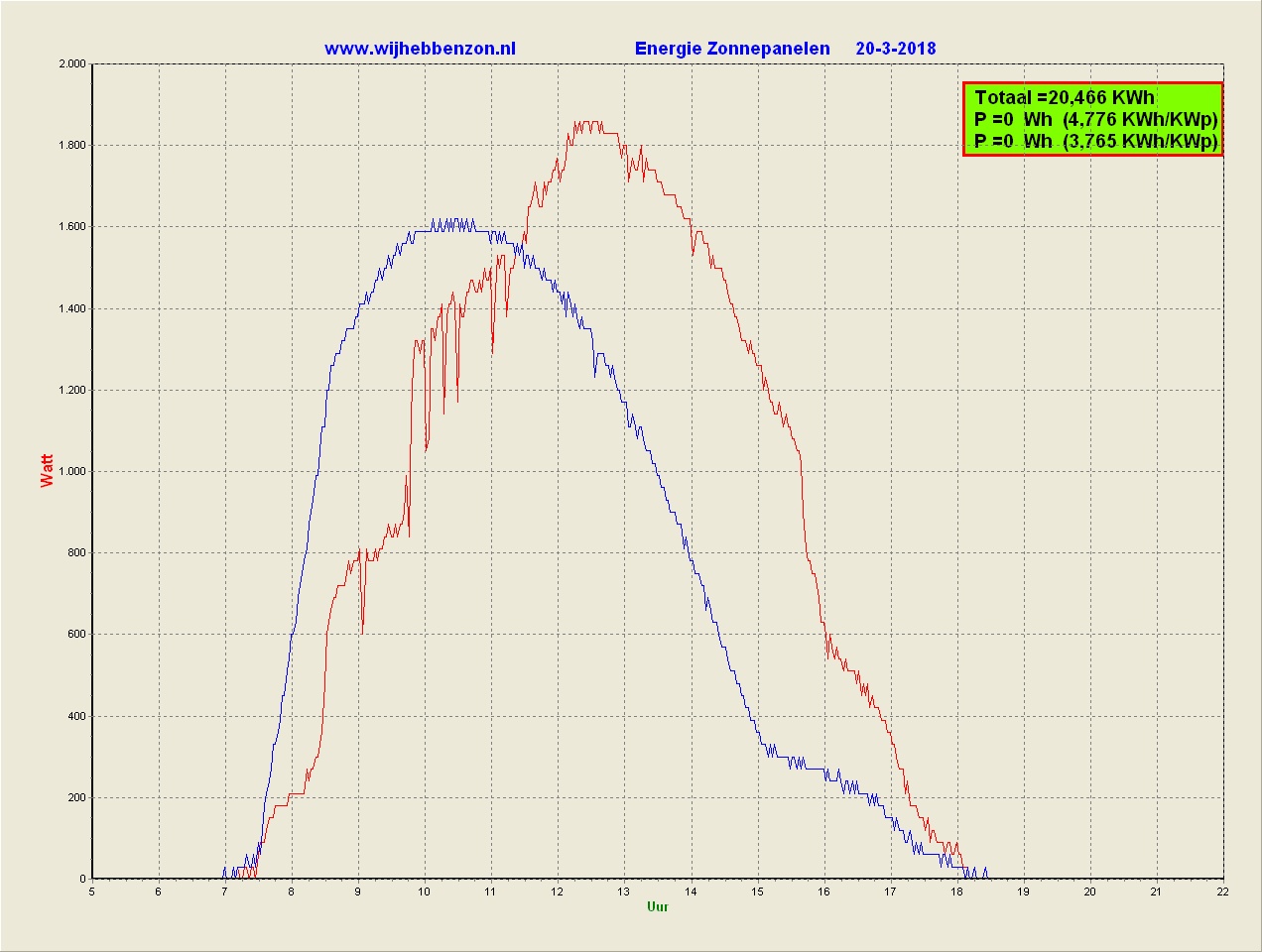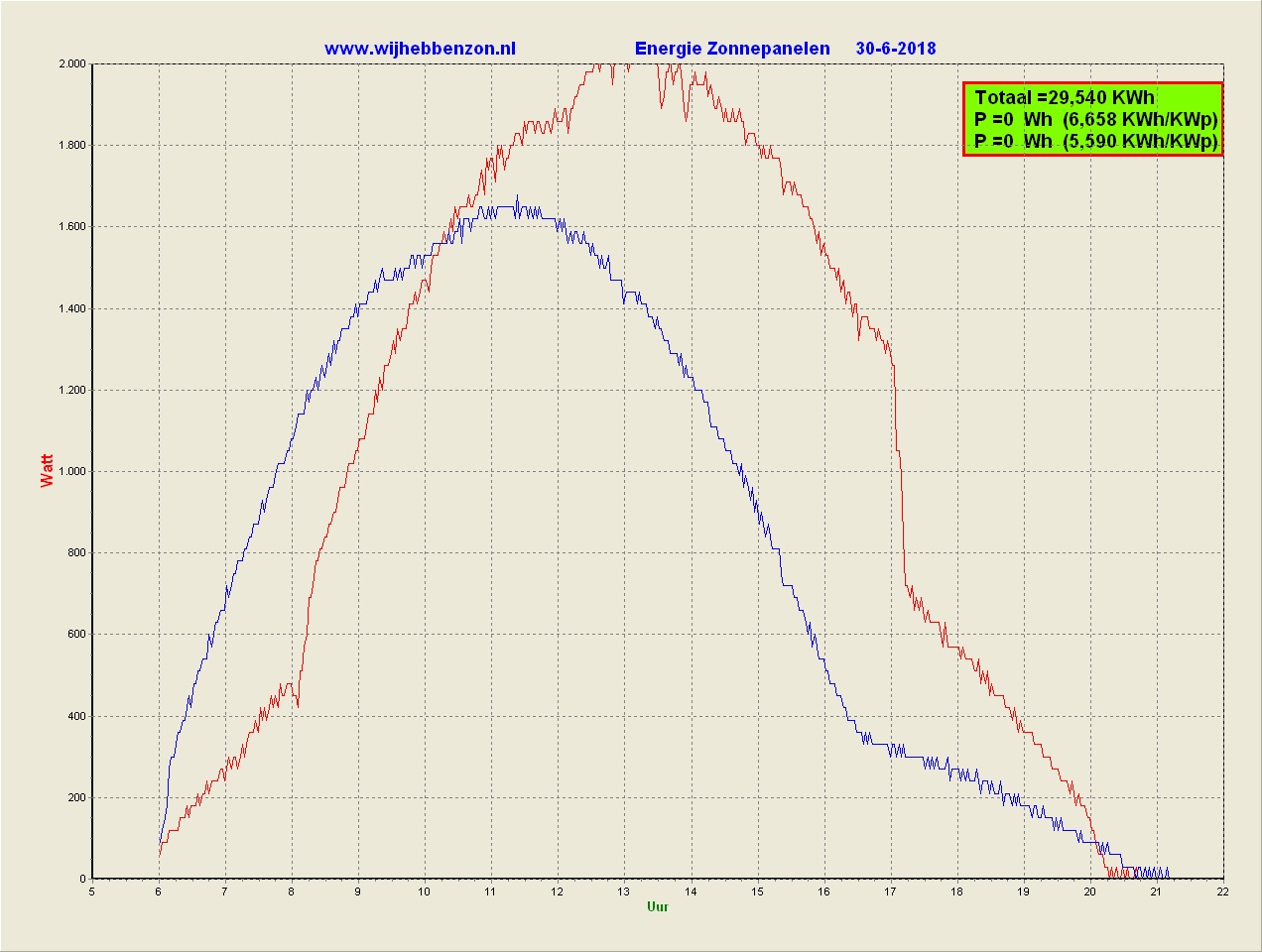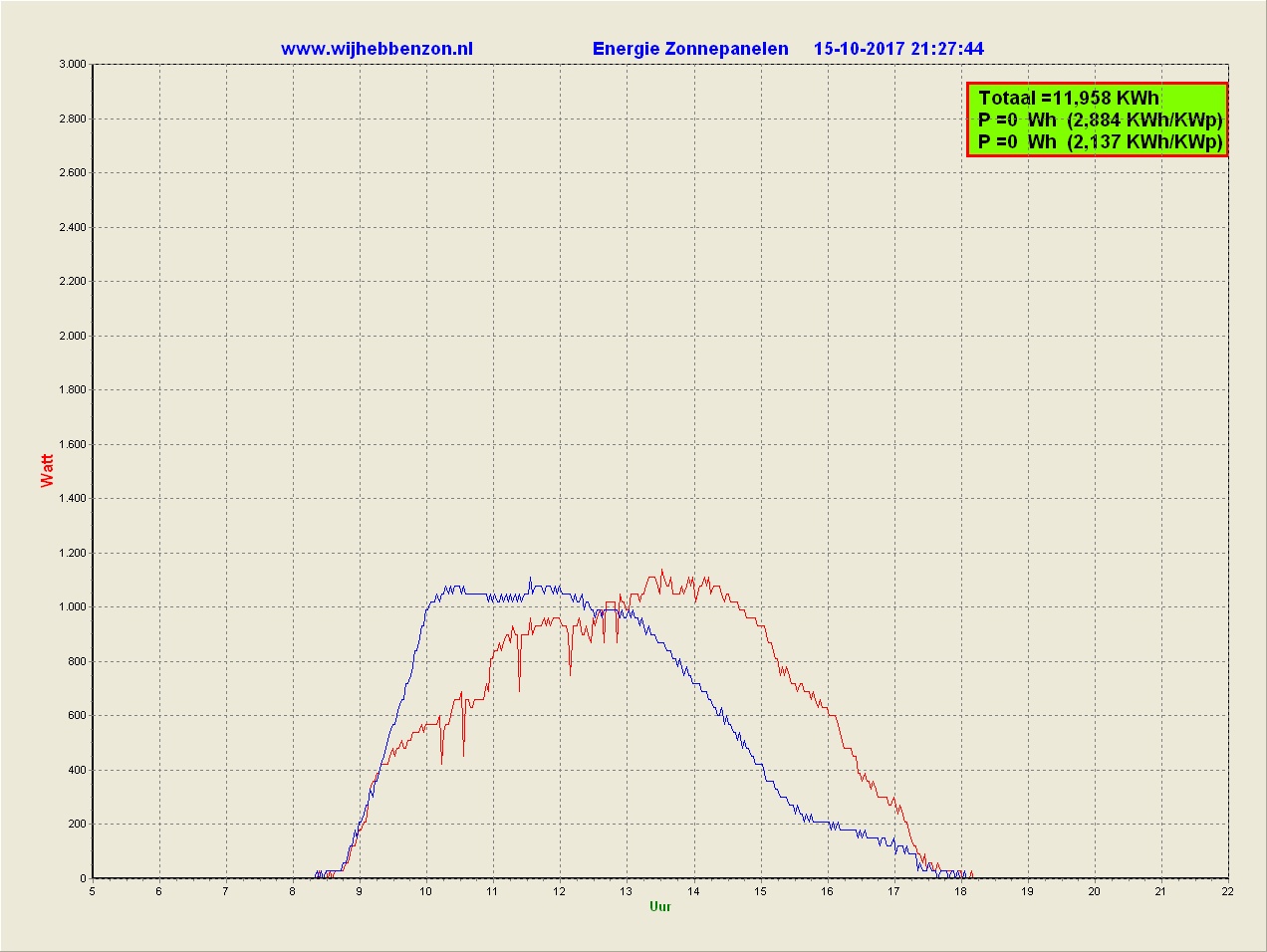PV-System, Power as function of View & Time
The Solar PV-system comprises an array looking East (= +115 degrees from North), in combination with an array looking South (= +205 degrees from North).
A panel-array looking West on the tilted roof would be a fitting supplement for full, daylong coverage, but considering it's viewing direction of -65 or (+295) degrees from North (and the shade from western neighbour's roof) not a good investment.
This configuration provides PV-production as long as light is available.
The background for selecting this configuration?
Expected output-efficiency is related to the viewing direction, as indicated in this diagram, although consider also that output is variable with daytime & season.
According to this diagram for this latitude of +52 degrees the max. sun elevation has a variation between approx. 15 degrees on december 22 till approx. 62 degrees on june 22.
Mid-position is applicable in march and september.
[Other geo-locations have other results.]
Examples for PV-production on clear and sunny days around those dates.




Totaal = total, cumulative production this day from the whole PV-System (kWh)
Upper P / blue line = 1960Wp/Involar&SAJ-inverters, actual output (Wh) and achieved day-efficiency (kWh/kWp)
Lower P / red line = 2950Wp/STECA&Solis-inverters, actual output (Wh) and achieved day-effiency (kWh/kWp).
These 2 graphs have the following split-up of nominal panel-power over azimuth & elevation:
- 1960Wp = 1530Wp to East/ elevation 55 degrees + 430Wp to South/ elevation 15 degrees ~ 80% / 20%
- 2950Wp = 580Wp to East/ elevation 55 degrees + 2370Wp to South/ elevation average 15 degrees ~ 20% / 80%
- blue line has peak output at approx. 11:30 due to eastward orientation of it's panels
- red line has peak output at approx. 13:00 due to southward orientation of it's panels
- in midwinter the blue peak is higher than the red peak, because the low sun elevation better matches the higher panel elevation
- contrary, in midsummer the red peak exceeds the blue peak, because high sun elevation well combines with low panel elevation
- in spring and autumn the blue and red graphline are equivalent, mirrored.
- the cumulation of blue line and red line always yields a broader (= less peaky) coverage than the individual segments
Important is that the 20%-components have their own inverter, avoiding effects on the 80%-components!
Result: the peaking for each segment is not as clear as for segments which are 'purely' 100% aimed along a main line-of-sight: in this case, the 20%-component aimed in other direction slightly smooths the peak at the main line of sight, and generates a 'shoulder' at the offset line-of-sight.
Conclusion: looking South at one fixed elevation, with production peaking at noon is not the "one&only" solution to get year-round a good daily PV-production.
A combination of viewing directions (such as one segment Eastward and another segment Westward, or mixing segments aimed in various directions, with own inverter/segment) very often will provide a good (if not better) PV-production spread over the days and over seasons, due to a broader cumulative peak and the advantage of production running from sunrise till sunset.
The more uniform availablity of power over the day also means that consumption of PV-power more easily can be spread over the day.
September 1st, 2018 another 330Wp has been added to the group of 2950Wp => within that group 28% is looking eastward:
=> 2440Wp East-looking and 2800Wp is South-looking.
In 2021 the eastern neighbours changed their house (= extended roof) after which we try to compensate the resulting dip in morning PV-production by shifting some panels:
since September 09, 2021 600Wp has been shifted from looking south to looking east under +30 degrees elevation
=> 3040Wp East-looking & 2200Wp South-looking.
The tendency of the story above is still true, but over next year the figures/graphs will change ......
Additonal (Dutch) PV-information
Sitemap/ Jumplist for this website, incl. links to dutch versions of pages
Copyright © 2013-2022 T4S
Samenvatting voor Rechten & Verantwoordelijkheden / Summary for Rights & Liabilities